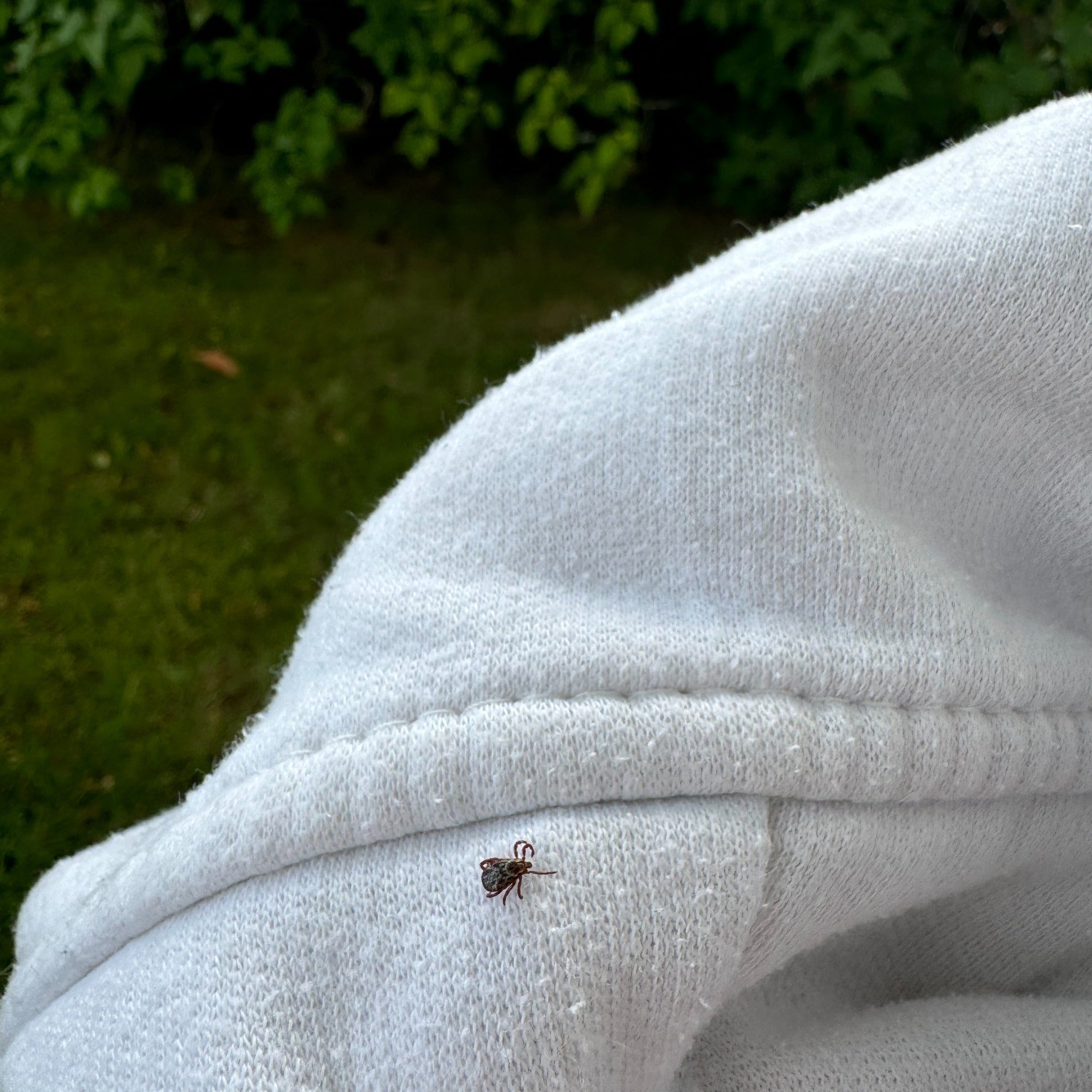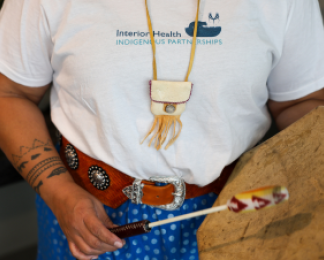How to prevent tick bites and tick-borne diseases


Spring is here and warmer weather means more people will be spending time outdoors in tall grass or wooded areas. This can also mean an increased chance of getting tick bites.
Ticks are small bugs that bite and feed on the blood of humans and animals and can sometimes transmit disease. Fortunately, there are precautions people can take to prevent illnesses that may be transmitted from tick bites.
How to protect yourself from tick encounters

"There are easy things you can do to protect yourself from ticks, such as covering up before you head outdoors and checking for ticks when returning from a walk, hike or bike ride," says Dr. Xuan Zhao, Interior Health resident medical health officer.
“Most tick bites do not result in illness. However, any bite from a tick should be cleaned because infection can occur whenever there is a break in the skin,” she adds.
One of the most important ways to reduce the risk of tick illnesses is to do a skin check on yourself, your children, and your pets after being outdoors. Follow these additional precautions:
- Keep grass near trees in your yard short, so adult ticks don’t have a place to climb up.
- Walk on cleared trails wherever possible and especially in tall grass or wooded areas.
- Wear a hat, long sleeves, pants, and close-toed shoes, and choose light-coloured clothing so you can spot ticks more easily.
- Tuck pant legs into socks or boots and tuck your shirt into your pants. Apply insect repellent containing DEET or Icaridin on uncovered skin.
- Carefully check clothing, gear and your full body when leaving an area where ticks may live, including the scalp (covered or not), groin and underarms. Have someone help young children check for ticks.
- Put the clothes you wore in the dryer on a hot setting for at least 10 minutes to kill loose ticks.
- Take a shower to remove any loose ticks on your body.
- Regularly check household pets for ticks
What to do after finding a tick on your body
If you find a tick on yourself, a family member or pet, wear gloves when removing it and be careful not to crush the tick as this could cause it to inject its stomach contents into the bite wound and increase the chance of infection. Most people don’t notice when ticks bite due to special proteins found in the insect’s saliva.
When to see a health-care provider to remove the tick
See your health-care provider to remove the tick if it has buried itself deep into your skin. This happens if the tick has been on you for several hours or days. When a tick has burrowed deep into your skin, it is very hard to remove the tick without leaving some mouth parts behind, which can cause an infection.
You can also see a health-care provider if you have concerns or need assistance removing a tick.
Tips to remove ticks safely
- Use tweezers or forceps to gently grasp the tick close to your skin.
- Without squeezing, steadily lift the tick straight out of the skin.
- After removal, clean the area with soap and water. You may disinfect the wound with antiseptic cream.
- If you find a tick, check very carefully for other ticks.
You can use a free photo-based identification platform called eTick to identify the species of tick quickly and accurately. Information is then provided about whether the type of tick is one that can carry disease and if any further steps are needed. The submission process takes less than a few minutes and results are back to you within two days.
Ticks found on B.C. residents can be tested for free at the BCCDC Public Health Laboratory if submitted by a doctor. Commercial tick tests are not recommended. If you’ve removed a tick yourself and you or your doctor want to submit it for testing, save it for your doctor by putting it in a container with a tight lid with a damp cotton ball to keep it alive. Write down the location of where you think the tick came from and make an appointment with your doctor as soon as you can.
Tick-borne diseases – What to look for
While tick bites can often be harmless, some can make you very sick as they spread germs like bacteria and viruses. Lyme disease is the most common tick-borne disease in B.C. and North America. In B.C., less than one per cent of ticks tested carry the bacteria B. burgdorferi that cause Lyme disease.
The symptoms of many tick-borne diseases can be quite similar and include fever, headache, muscle and joint pain, and rash. These can occur days to weeks after a tick bite. In rare cases, toxins released from ticks can lead to paralysis, especially if they are attached for several days, but the symptoms fade once the tick is removed.
If you have symptoms after being bitten by a tick, report them to your health-care provider right away. Lyme disease and other tick-borne infections can be treated with antibiotics and early diagnosis and treatment can help prevent complications.
Learn more about ticks
Quick facts
- There are more than 20 species of ticks in B.C., but only three species normally bite humans. Although the bites are sometimes painful and slow healing, there is little danger of disease as long as they are removed promptly.
- While ticks are common in the Interior Health region, most are the wood tick (Dermacentor andersoni) which do not carry the Lyme disease bacteria. The wood tick can carry other diseases, such as Rocky Mountain spotted fever, although these diseases are rare in Canada.
- Lyme disease-carrying ticks (Ixodes pacificus and Ixodes angustus) are more common in the coastal areas of B.C. Overall, Lyme disease is less common in B.C. than eastern and central Canada and northeastern US. Anyone who has the typical bullseye target skin rash of Lyme disease, or other symptoms after a tick bite, should see their physician.
Find out more
Check out more stories like this


Thirty-five years into her career with IH, Elizabeth Adolph still loves what she does: taking care of residents at Mountain View Lodge in Lillooet.
/stories/we-are-ih-care-aide-proud-residents-consider-her-friend


In the 5 years since the In Plain Sight report was released, we’ve made strides towards being a culturally safe organization—but there’s more work to do.
/stories/ihs-fifth-plain-sight-response-supports-reconciliation


Inspired by her aunt’s career as a pharmacist, Angela became a pharmacy technician to use the hands-on aspect of compounding to benefit patient care.
/stories/we-are-ih-pharmacy-tech-enjoys-problem-solving-patients


Souper Meals brings students together once a week over locally made soup, fresh fruit, veggies and buns, all free of charge.
/stories/more-soup-benefits-universal-school-lunch-program


With decades of experience rooted in compassion and commitment to children’s health, Dr. Jeff Wong is carving a path for pediatric care at Kelowna Hospital.
/stories/dr-jeff-wong-leads-kelowna-pediatric-department-forward


The holidays season offers opportunities to drink alcohol, and it can be easy to overindulge. Get tips on how you can drink less - and live more.
/stories/holiday-spirit-tips-drinking-moderation-season
STAY CONNECTED
Receive news, alerts, public service announcements and articles right to your inbox.

